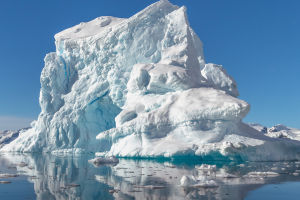Canyons are some of the most dramatic and awe-inspiring landforms on Earth, shaped by the powerful forces of tectonic activity and erosion.
They are formed primarily due to the rapid uplift of the Earth's surface caused by tectonic movement combined with the aggressive downward-cutting action of rivers.
In mountainous regions, where slopes are steep, rivers can flow with great velocity, carrying away significant amounts of sand and soil. This process of erosion deepens the riverbed and, over time, the rock walls on either side of the river become nearly vertical, giving rise to the formation of a canyon.
Canyons are characterized by their large, narrow, and deep valleys, often with cross-sections shaped like a "V." They can stretch for thousands of meters in depth, with steep slopes and a very narrow base. Their considerable depth relative to their width makes canyons some of the most striking features in the natural landscape. Have you ever visited the following dangerous but spectacular canyons?
1. Yarlung Tsangpo Grand Canyon, China
The Yarlung Tsangpo Grand Canyon, located in the Tibet Autonomous Region, China, holds the title of the deepest canyon in the world. Confirmed in 1994, this monumental canyon extends 504.9 kilometres in length and reaches depths of up to 6,009 meters.
The canyon's unique geographic advantage results in a high volume of water flow and substantial annual precipitation, ranging from 4,500 to 10,070 millimetres. This exceptional water richness contributes to the canyon's dynamic and vibrant ecosystem. The Yarlung Tsangpo Grand Canyon’s formidable depth and dramatic landscape make it a significant geological and ecological marvel.
2. Capertee Valley, Australia
Capertee Valley, located in New South Wales, Australia, is the largest canyon in the country and is renowned for its rugged terrain and towering sandstone cliffs. The rocks within the canyon date back millions of years, providing a rich geological history. The area is also known for its ancient rock paintings, which are approximately 2,000 years old.
Additionally, Capertee Valley has been the site of significant discoveries, including diamonds. The canyon’s historical and geological significance, combined with its striking natural beauty, makes it a notable feature in Australia’s landscape.
3. Grand Canyon, USA
The Grand Canyon, situated in Arizona, USA, is arguably the most famous in the world. Although it may not be the deepest, its grandeur and scale are renowned. The canyon stretches 227 miles long and plunges to a depth of 6,000 feet. Recognized as one of the seven natural wonders of the world, the Grand Canyon continues to captivate visitors with its breathtaking vistas.
The prevailing theory of its formation suggests that around 17 million years ago, the Colorado River began carving through the rock layers, shaping the canyon as it is seen today. The Ice Age further contributed to its formation by increasing water flow, which accelerated the erosion process. Annually, approximately 50,000 tourists flock to the Grand Canyon to experience its majestic landscape and geological significance.
4. Colca Canyon, Peru
Colca Canyon, located in southern Peru, is one of the deepest canyons in the world, reaching depths of 13,650 feet. It is twice as deep as the Grand Canyon, making it an impressive geographical feature. Colca Canyon is not only known for its dramatic depth but also for its stunning views and rich biodiversity.
It serves as a popular tourist destination, attracting visitors with its picturesque landscapes and the opportunity to observe well-known bird species, such as the Andean condor, as well as various mammal species. The canyon’s natural beauty and diverse wildlife make it a significant site in Peru’s tourist landscape.
Canyons like the Yarlung Tsangpo Grand Canyon, Capertee Valley, the Grand Canyon, and the Colca Canyon are remarkable examples of Earth's geological processes. Each canyon offers a unique perspective on the forces that shape our planet, providing visitors with opportunities to witness and explore some of the most dramatic and beautiful landscapes in the world.


